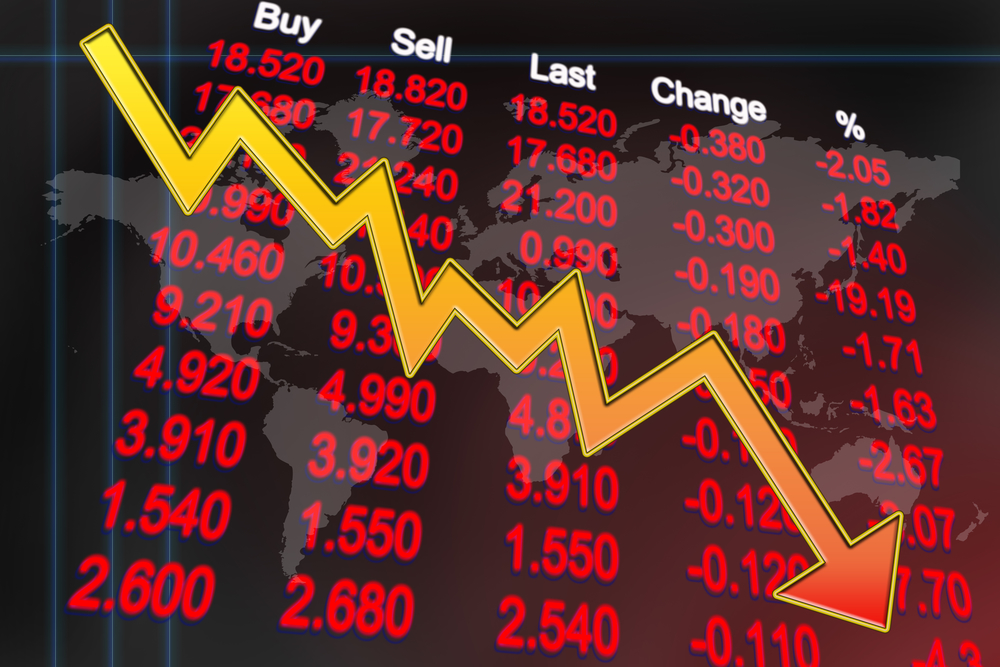October is bad for markets.
At least that’s according to the so-called October Effect theory. Apparently, investors get nervous this time of the year, so markets are more prone to declines.
The theory came about because…well, some of the major panics in history have happened in October.
The panic of 1907…the crash of 1929…Black Monday in 1987…
This October hasn’t let us down.
We are only in the middle of the month and markets have been jittery to say the least.
October or not, there are reasons to be nervous. Bond yields are rising. The US-China trade war is heating up.
You could also blame it on ‘el loco’ — loco means crazy in Spanish. That is, the US Federal Reserve.
In case you missed it, Trump thinks the Fed has gone wild.
As he said recently:
‘The problem I have is with the Fed. The Fed is going wild. I mean, I don’t know what their problem is that they are raising interest rates and it’s ridiculous. The problem [causing the market drop] in my opinion is Treasury and the Fed. The Fed is going loco and there’s no reason for them to do it. I’m not happy about it.’
To stimulate the economy after 2008, the Fed lowered interest rates and increased their balance sheet.
Now they are looking to do the opposite. That is, increase interest rates and decrease their balance sheet so they can have some tools in the next recession.
They are not alone either. The European Central Bank (ECB) is also looking to end quantitative easing by the end of this year and start increasing interest rates in 2019.
If years of stimuli have finally resulted in a booming economy…what do you think could happen when they reverse the process? [openx slug=inpost]
Why are global markets jittery?
Markets are on edge because they didn’t really believe the Fed would go through with their plans to lift rates.
The Fed may even tighten even more than they initially forecast. US Fed Chairman Jerome Powell recently said interest rates were ‘a long way from neutral point’ and that they may even be going ‘past neutral’.
The thing is, the Fed may have stopped monetary stimulus, but fiscal stimulus is still going. That is, tax cuts and government spending.
And debt is still rising.
The US budget deficit keeps expanding. In just one year, the US budget deficit expanded by 17%. As reported by CNBC:
‘The U.S. federal budget deficit rose in fiscal 2018 to the highest level in six years as spending climbed, the Trump administration said Monday.
‘The deficit jumped to $779 billion, $113 billion or 17 percent higher than the previous fiscal period, according to a statement from Treasury Secretary Steven Mnuchin and Office of Management and Budget Director Mick Mulvaney. It was larger than any year since 2012, when it topped $1 trillion.
‘Federal revenue rose only slightly, by $14 billion after Republicans chopped tax rates for corporations and most individuals.’
The expectation is that all that spending will increase government revenues. The problem is that with the Fed raising rates, all that debt is now getting more expensive.
I’m still sceptical that the Fed will keep going with its plan. Any change could derail their plans.
What could make the Fed stop on its tracks?
Weak inflation, a weaker economy…or even a massive market crash.
The truth is, we’re unprepared for the next one.
The Bank of International Settlements (BIS), the bank of central banks, recently touched on this issue in their quarterly report.
In it, Claudio Borio, the head of the Monetary and Economy department, referred to the global economy as a ‘patient’ and the market turmoil as ‘withdrawal symptoms’.
‘What happens next is, as always, hard to tell. Will the patient continue to mend, as looked likely until the first quarter of this year, or will there be a relapse? What one can say is that the patient’s full recovery will not be smooth. On the financial side, things look rather fragile. Markets in advanced economies are still overstretched and financial conditions still too easy. Above all, there is too much debt around: in relation to GDP, globally, overall (private and public) debt is now considerably higher than pre-crisis. Ironically, too much debt was at the heart of the crisis, and now we have more of it – although, fortunately, banks have reduced their leverage thanks to financial reform. With interest rates still unusually low and central banks’ balance sheets still bloated as never before, there is little left in the medicine chest to nurse the patient back to health or care for him in case of a relapse.’
There are reasons to be nervous.
After years of monetary stimulus and solving a debt crisis with more debt, this could be repayment time.
That’s why this is the time to get ready for what could come next.
Best,
Selva Freigedo
